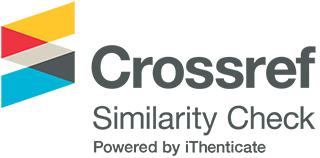A Corpus-based Analysis of Covid-19 Vaccine Metaphor in Egyptian Newspapers
DOI:
https://doi.org/10.33422/jarss.v8i3.1408Keywords:
Corpus, Covid19 Vaccine, Mataphor, Race, War, JourneyAbstract
This paper aims to investigate how the Covid-19 vaccine is metaphorically represented in English-language Egyptian online newspaper articles. It studies the main metaphors with their entailments, and seeks to uncover the hidden ideologies behind them. A web-derived newspaper corpus of +209000 tokens, collected from articles published between January 2020 and December 2023, has been compiled to provide a comprehensive view of a metaphorical representation of COVID-19 vaccine in Al-Ahram Weekly and Egyptian Gazette newspaper articles. To provide both quantitative and qualitative findings, Charteris-Black’s (2004) three-step corpus-based approach of critical metaphor analysis (CMA) has been employed as a framework to identify, interpret, and explain the metaphors in the corpus. The quantitative results show that the race metaphor permeated the analyzed corpus. Qualitative findings suggest that the race metaphor presents the COVID-19 vaccine as a competitive effort, a race against the virus, an unfair playing field, and a symbol of global solidarity and inequality. Moreover, it reflects the high stakes, complex challenges, and competing priorities in vaccine rollout. Research shows that the metaphors of war and journey are also used primarily to persuade people. The war metaphor creates a sense of urgency and places the vaccine at the center of a high-stakes battle. The journey metaphor, in contrast, has a more optimistic and collaborative tone. It acknowledges the task’s difficulty but frames it as a united effort with an achievable destination in sight. The widespread use of these persuasive metaphors in the vaccine corpus demonstrates the importance of the vaccine, mobilizes public support, and fosters a sense of hope and resolve in the face of the pandemic.
Downloads
Published
Issue
Section
License
Copyright (c) 2025 Shaimaa Ibrahim Mustafa

This work is licensed under a Creative Commons Attribution 4.0 International License.












